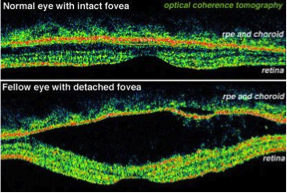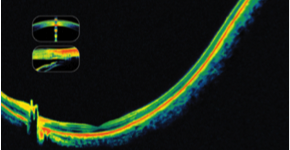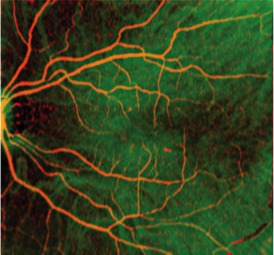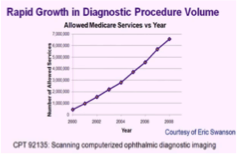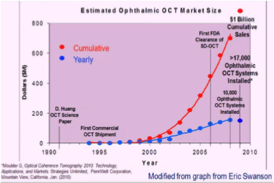Ophthalmology |
|
|---|---|
|
Today’s ophthalmologist uses OCT on a daily basis. Without OCT, the early and accurate diagnosis of retinal problem, anterior issues, infections, AMD (age-related macular degeneration) and many other eye ailments would be much more difficult, and more people might lose their sight. Two-dimensional and three-dimensional imaging of the eye vividly illustrates many of the most common and the most destructive diseases. Laser implications: The Insight laser's fast measurement speed reduces movement blurring and supports high-definition 3D imaging. The long coherence length allows imaging over a longer distance. Importantly, the rapidly declining price supports broader adoption of ophthalmic OCT worldwide (and higher profit margins for OCT suppliers). Several of the Insight laser's key features are a good fit for ophthalmic applications. Additional general information:
Additional technical information: |
OCT provides ophthalmologists
With OCT, ailments such as age-related macular
|
|
OCT can help with a diagnosis if there is |
Detailed view of |
|
The number of diagnostic opthalmic OCT |
Ophtalmic OCT market size |



